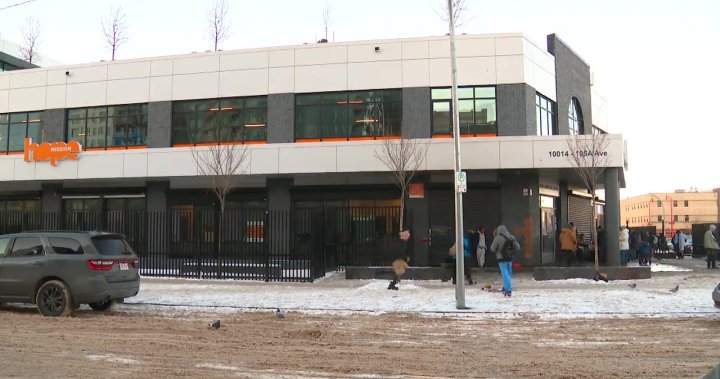The Herb Jamieson Centre, a men’s emergency shelter operated by Hope Mission in Edmonton, recently underwent operational changes that sparked confusion and concern among its users. Initially, a notice posted on the shelter’s door suggested a shift to nighttime-only operations, leading many to believe they would be turned out each morning with nowhere to go during the day. This caused anxiety, particularly among those who rely on the shelter for daytime respite and access to vital services, such as medical intervention for overdoses. The perceived reduction in operating hours raised fears of increased vulnerability to the elements and potential dangers on the streets, especially during the harsh Edmonton winters.
Hope Mission subsequently clarified that the shelter was not closing during the day, but rather repurposing some of its overnight sleeping space to create a community area offering a broader range of services. This new space is intended to facilitate access to resources like housing assistance, addiction treatment, recovery programs, AIDS support, and other social supports. The organization emphasized its goal of moving beyond simply providing beds to actively assisting individuals in transitioning to more stable situations. While acknowledging the shift of 120 24/7 sleep spaces to overnight-only use, Hope Mission maintained that these beds were underutilized during the day and that the change allows for a more effective allocation of resources.
Despite assurances that the shelter remains open 24/7 and that some daytime sleeping spaces are still available, the initial communication about the changes left many homeless individuals feeling uneasy and frustrated. The suddenness of the announcement and the lack of clear explanation fueled anxieties about access to basic necessities like shelter and safety. For those accustomed to relying on the Herb Jamieson Centre as a daytime refuge, the prospect of spending days on the streets, exposed to the elements and potential dangers, was deeply unsettling.
The specific concerns raised by those who use the shelter highlight the precariousness of their situation and the vital role the Herb Jamieson Centre plays in their lives. Branden Adams, a regular overnight resident, stressed the importance of the shelter’s 24/7 availability in providing immediate medical assistance, particularly for overdoses, a common occurrence among the homeless population. He emphasized that the shelter staff’s presence and training in administering Narcan and contacting emergency services can be life-saving. The fear of losing this readily available support network heightened the anxiety surrounding the operational changes.
Parnel St. Arnault, another long-term homeless individual, underscored the essential nature of 24/7 shelter access, especially during the harsh winter months. He expressed frustration with the changes, emphasizing the ongoing struggles faced by the homeless population and the lack of alternative daytime options. St. Arnault’s poignant description of the streets as his “living room” underscores the stark reality of homelessness and the reliance on shelters like the Herb Jamieson Centre for basic survival. He even voiced a preference for braving the elements over staying in shelters at times, citing safety concerns within the shelters themselves.
The situation at the Herb Jamieson Centre reveals the complex challenges involved in addressing homelessness. While the intention behind the operational changes – to provide a more comprehensive range of services and facilitate transitions to stable housing – is laudable, the implementation and communication of these changes created significant anxiety and confusion among the very population they are intended to serve. The incident highlights the importance of clear and transparent communication, particularly when dealing with vulnerable populations, and the need for a sensitive and nuanced approach to implementing changes that impact basic needs like shelter and safety. It also underscores the continuing need for accessible and safe daytime spaces for those experiencing homelessness, even as efforts are made to transition them into more permanent housing solutions.










